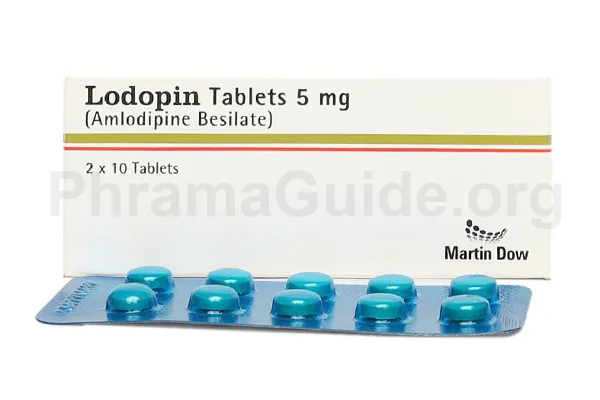Lodopin is a medication commonly used to treat high blood pressure (hypertension) and certain types of chest pain (angina). Like any medication, Lodopin can cause side effects in some individuals, It’s important to note that not everyone experiences these side effects, and their severity can vary from person to person.
Common Side Effects
- Swelling of the ankles or feet: Known as peripheral edema, this side effect occurs due to the dilation of blood vessels, causing fluid to leak into tissues. It’s a common side effect of Lodopin.
- Flushing or feeling warm: Some individuals might experience redness or warmth in the face or neck due to the widening of blood vessels.
- Dizziness or lightheadedness: Lodopin can cause a drop in blood pressure, leading to feelings of dizziness or faintness, especially when standing up quickly.
- Fatigue or tiredness: Some people might feel more tired than usual while taking Lodopin.
- Headache: Headaches can occur as a side effect, especially during the initial phase of taking the medication.
- Palpitations: Some individuals might experience a sensation of rapid or irregular heartbeat.
- Gastrointestinal issues: Lodopin can cause mild digestive problems such as nausea, abdominal discomfort, or constipation.
- Muscle cramps or weakness: Rarely, Lodopin might cause muscle-related symptoms such as cramps or weakness.
- Flu-like symptoms: Some individuals might experience symptoms resembling a mild flu, including feverishness, malaise, or muscle aches.
- Skin reactions: Although less common, Lodopin can cause skin reactions such as rash or itching in some people.
Less Common Side Effects
- Irregular heart rate or palpitations: In some cases, Lodopin can cause changes in heart rhythm, leading to irregular heartbeat or palpitations.
- Allergic reactions: Although rare, some individuals might experience allergic reactions to Lodopin, presenting as rash, itching, swelling (especially of the face, tongue, or throat), severe dizziness, or trouble breathing.
- Increased or decreased urination: Lodopin might affect kidney function in rare instances, leading to changes in urination frequency or volume.
- Jaundice: A very rare side effect of Lodopin is jaundice, which is characterized by yellowing of the skin or eyes and can indicate liver problems.
- Increased blood sugar levels: Some individuals might experience a rise in blood sugar levels while taking Lodopin, especially those with pre-existing diabetes.
- Tremors or shaking: Lodopin might cause tremors or shaking in rare cases, affecting the hands or other parts of the body.
- Depression or mood changes: Although less common, some individuals might experience mood changes, including depression or anxiety, while taking Lodopin.
- Gastrointestinal bleeding: In rare instances, Lodopin might contribute to gastrointestinal bleeding or ulcers.
- Visual disturbances: Lodopin might rarely cause changes in vision or other visual disturbances.
- Swelling of the gums: Some individuals might experience gum swelling or inflammation as a side effect of Lodopin.

What is Lodopin?
Lodopin is one of the leading brands of Amlodipine, manufactured and marketed by Martin Dow Marker Ltd, Pakistan.
Lodopin : Available Formulations and Strengths
Presently, Lodopin is available in Tablet form with the following strengths.
Lodopin Tablets : 2.5mg, 5mg, and 10mg strengths.
What Are The Possible Drug Interactions of Lodopin?
- Antihypertensive medications: Combining Lodopin with other blood pressure-lowering drugs (e.g., beta-blockers, ACE inhibitors, other calcium channel blockers) can lead to an additive effect, causing a further reduction in blood pressure. While sometimes used in combination therapy, careful monitoring is essential to prevent excessive lowering of blood pressure.
- CYP3A4 Inhibitors and Inducers: Lodopin is metabolized by the CYP3A4 enzyme system in the liver. Medications that inhibit this enzyme, such as certain antibiotics (e.g., clarithromycin, erythromycin), antifungals (e.g., ketoconazole), or HIV protease inhibitors, can increase Lodopin levels in the body, potentially leading to a higher risk of side effects. Conversely, CYP3A4 inducers (e.g., rifampin) might decrease Lodopin levels, reducing its effectiveness.
- Grapefruit and grapefruit juice: Grapefruit and its juice contain compounds that can inhibit the CYP3A4 enzyme, potentially increasing Lodopin levels in the bloodstream. Avoiding grapefruit products is advisable while taking Lodopin.
- Sildenafil and other phosphodiesterase inhibitors: When combined with drugs like sildenafil (Viagra) or other phosphodiesterase inhibitors used to treat erectile dysfunction or pulmonary hypertension, there can be an additive effect on lowering blood pressure, increasing the risk of hypotension (abnormally low blood pressure).
- Simvastatin and other statins: Lodopin can interact with certain statins used to lower cholesterol, such as simvastatin, increasing the risk of muscle-related side effects or muscle damage.
- Lithium: Combining Lodopin with lithium might increase lithium levels in the blood, leading to lithium toxicity.
- Tacrolimus: Lodopin might increase blood levels of tacrolimus, which is used to prevent organ rejection after transplantation, potentially leading to increased tacrolimus side effects.
- Nonsteroidal anti-inflammatory drugs (NSAIDs): NSAIDs, like ibuprofen or naproxen, may reduce the blood pressure-lowering effects of Lodopin or increase the risk of kidney damage when used together.
- Digoxin: Lodopin might increase blood levels of digoxin, used for heart conditions, potentially leading to digoxin toxicity.
- Herbal supplements and supplements: Certain herbal supplements or nutritional supplements might interact with Lodopin, affecting blood pressure or causing side effects. Always consult a healthcare professional before starting any new supplement while taking Lodopin.

Leave A Comment